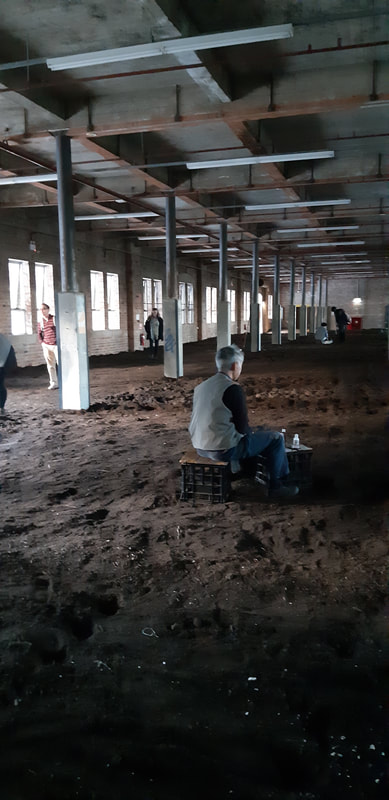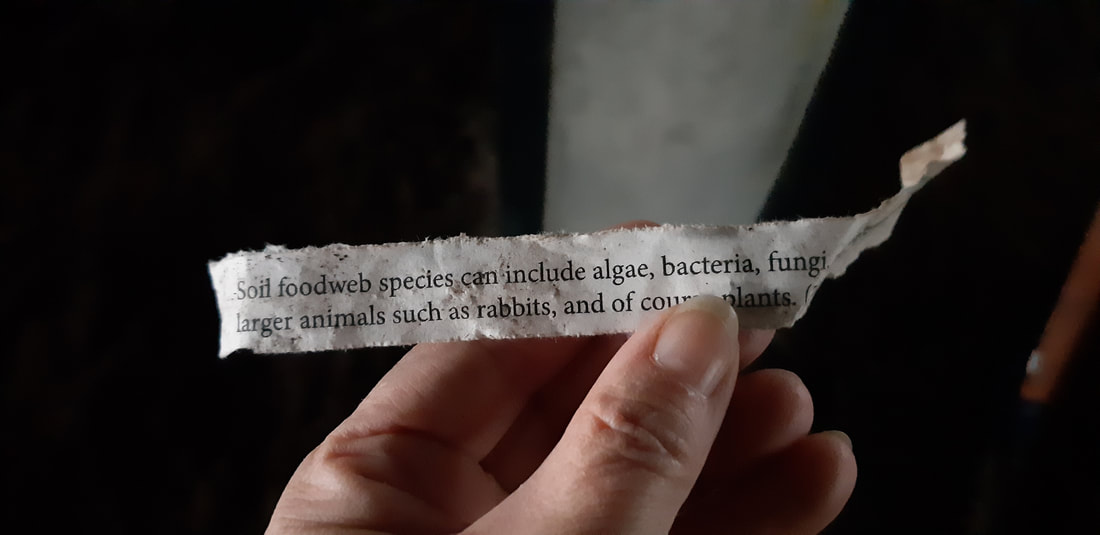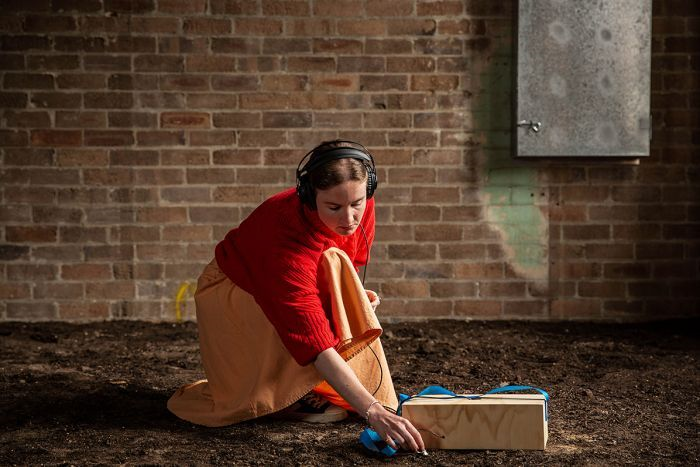|
My nose still itches. I’m driving home during peak hour and I’m strangely uncomfortably comfortable. Comfortable because I have just left Asad Raza’s contemplative work Absorption and uncomfortable because my eyes and nose are calling to be scratched from the inside out. I don’t know if this will be every allergy sufferer’s response to the work but it is overwhelmingly mine. Smell Your initial interaction with the space happens before you walk through the door. Wafting up from the floor is the calming smell of earth, of Mother Nature doing her thing, of microbes and mushrooms. The smell you get when you open a bag of potting mix. I breathed deeply, it felt nurturing and familiar. I continued to sniff the air as I walked, focusing on my breath, accidentally inducing a state of meditation. Then as quickly as the smell had arrived it left. My survival sensors had absorbed that data and the recognition was no longer needed. Sight The second thing that happens when you walk into the dark space is pupil dilation. You step over the threshold, lift your brow, widen your eyes and scan for signs of life and light. Once your eyes adjust to the dim you make out Daniels Boyd’s window treatments which allow dots of light to strike out across the space. Like stain glass windows these beams of light help you to gleam the length and breadth of the space allowing you to identify a grid of columns and the reflective vest wearing cultivators working quietly and methodically. A young cultivator trod carefully towards me. This softly spoken gardener of the dark detailed the various artworks and processes occupying the space, the different artist contributions and the various interpretations on the title, Absorption. Unlike most invigilators these caretakers are active contributors to the work, systematically lifting, turning, crushing, grinding, wetting and raking the earth. Touch Traversing the space became the next sensory experience. The various areas of worked soil responded differently to each step. Some were firm and you could march tall and sturdy. Some were lumpy, clumpy and cracked and if you paused too long you quickly sank into the loam. Others were rugged, undulating and full of pit holes, gritty and crunchy. Then there were areas covered with the patterned scratching’s of rakes and hoes, too pretty to mark with your own tracks. The solitary workers who toiled with unidentifiable purpose caressed the space through their actions of measuring, scattering and aerating. In the poor light I could just make out the remnants of things they were adding. Squatting down to identify them my fingers filtered out wisps of plastic, fibre, bone and paper. ‘Earth to earth, ashes to ashes, dust to dust,’ rang through my ears. Sound Usually a space like this rings with sound but in this instance it does not. The earth subsumes and suffocates any resonance. The cultivators’ voices and actions do not traverse the space, there is no white cube echo, just the soft crunch of mystery additives under your feet. To discover the secret sounds of the space you need to locate two wooden boxes pitched to the floor. Megan Alice Clune’s simple sound boxes broadcast beautiful orchestrations affected by the rising and falling damp. Once you’ve donned her headphones the site is charged with cathedral like noise, a cacophony programmed specifically in response to a manmade earthen temple. Her work turns this composting ritualization into a secret service or calibration, an attunement to the frequency of nature. Taste
This was the only sense that was not encouraged during my visit and it wasn’t until later that I thought about it. How would this taste? I know people taste samples of earth, specialists who can identify the different chemical and nutrient make up of substrate, detectives on TV tasting remnants of blood on murderous ground, and I wondered if the alternative areas of raked dirt would taste differently. For example would the tract of soil with coffee from the Kaldor office be bitter? Would the sandy Fraser Island soil be salty, would the industrial waste taste plastic-y, would there be an aroma of hipster beer from the spent barley? I guess I’m wondering, will tomatoes grown in this human assisted soil ‘taste as sweet’ and will I want to try them? Do I have enough antihistamine to go back and give it a try? Note: I suggest reading the below ABC News article to get the most out of your visit to this public artwork. https://www.abc.net.au/news/2019-05-10/kaldor-public-art-project-asad-raza-absorption-soil-dirt/11096070 Kaldor Public Art Projects at Carriageworks. The Clothing Store 245 Wilson St. Eveleigh, Sydney, Australia 3rd – 19th May 2019 Open Monday to Sunday 10am-6pm http://kaldorartprojects.org.au/ https://carriageworks.com.au
0 Comments
|
Author
Archives
May 2019
Categories |






 RSS Feed
RSS Feed
